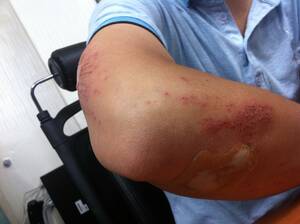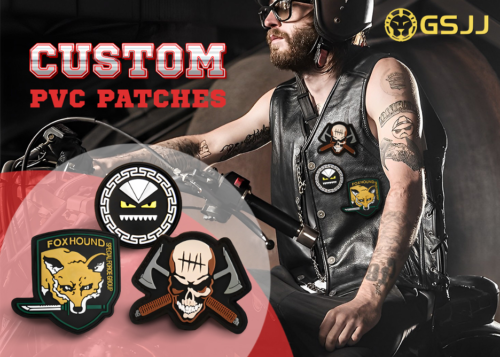
05 Jul What Is One of the Most Common Ways in Which Workers Get Hurt Around Machines?
Machine-related injuries are a significant concern in many workplaces, affecting the safety and well-being of numerous workers. A common way in which workers get hurt around machines is due to the lack of proper guarding. Machine guards are essential as they serve as the first line of defense against hazards like cuts, crushing injuries, and even amputations. Ensuring that machines have appropriate guards can drastically reduce the risk of these severe injuries.
Neglecting to maintain a clean work area is another prevalent cause of accidents. According to a report on machine shop injuries, keeping workstations tidy is crucial. Spillages, scattered tools, and other environmental issues can create tripping hazards, leading to falls that may result in serious harm.
For those who have been injured at work, understanding the proper procedures for filing a workers’ compensation claim and seeking legal advice is vital. Rapid response to injuries not only ensures appropriate medical treatment but also helps in securing rightful benefits for the affected worker.
Common Machine-Related Hazards in the Workplace
Workers in machine-heavy environments face numerous hazards. Key dangers include injuries at the point of operation, entanglement risks, and exposure to flying debris and particles.
Point of Operation Injuries
The point of operation is where a machine performs its task, such as cutting, shaping, or assembling materials. Injuries in these areas often involve severe trauma like amputations, fractures, and deep lacerations. These injuries can occur when workers’ hands or other body parts come into contact with moving parts.
Protective measures include using proper machine guards and safety devices. Regular inspection and maintenance are also crucial to ensure these guards are effective. Training workers on the safe use of machines and the importance of keeping alert can help reduce the risk of point of operation injuries.
Entanglement Hazards
Entanglement hazards occur when loose clothing, hair, or jewelry gets caught in moving parts of a machine. This can lead to severe injuries such as broken bones, severe lacerations, or even death. These hazards are common around rotating parts, pulleys, and belts.
To prevent entanglement, workers should wear tight-fitting clothing and remove any loose items. Machines should be equipped with guards that cover moving parts to reduce the risk of objects getting caught. Training employees on safe work attire and keeping work areas tidy can further mitigate these risks. Regular audits ensure that safety protocols are followed.
Additionally, in order to increase the recognizability and utility of their work attire, many companies have also chosen to add Custom PVC Patches to their safety work attire.
These patches not only showcase a company’s brand image, but they can also contain important safety messages or warnings that can enhance workers’ safety awareness. With well-designed custom PVC patches, companies can ensure workers remain safe while presenting a professional image.
Flying Debris and Particles
Machines that cut, grind, or drill materials can produce flying debris and particles, posing risks of eye injuries and skin lacerations. Workers might also inhale these particles, leading to respiratory issues.
Personal protective equipment (PPE) such as safety goggles and face shields is essential to protect against flying debris. Additionally, using dust collection systems and maintaining adequate ventilation can minimize airborne particles. Regular equipment maintenance ensures that protective systems remain functional, while training workers on the proper use of PPE and safety procedures adds an extra layer of protection.
Safety Measures and Machine Guarding
Ensuring worker safety around machines involves using guarding equipment, conducting comprehensive safety training, and providing personal protective equipment (PPE). Each measure plays a crucial role in minimizing the risk of injuries.
Guarding Equipment and Devices
Machine guarding is essential to protect workers from moving parts. These guards can be physical barriers like fixed guards or interlocked guards. Fixed guards are permanent and provide a barrier between the worker and the machine. Interlocked guards shut down the machine when opened.
Additionally, presence-sensing devices detect if a person is in a hazardous area and stop the machine to prevent injury. Two-hand controls require the operator to use both hands, keeping them safe from the point of operation.
Proper installation and maintenance of these devices ensure continuous protection against mechanical hazards. Regular inspections and upgrades are necessary to keep the equipment functioning correctly and to comply with OSHA regulations found here.
Safety Training and Awareness
Safety training is vital for workers to understand the risks and proper operating procedures. Employees should be trained on the specific hazards associated with their machinery and the safeguards in place. This includes identifying danger zones, appropriate response protocols, and emergency procedures.
Incorporating interactive methods like simulations and hands-on exercises can enhance retention and understanding. Employers should conduct regular refresher courses to update workers on new safety standards and practices.
Personal Protective Equipment
PPE acts as the last line of defense. Common PPE for machine operators includes gloves, safety glasses, ear protection, and protective clothing. The choice of PPE depends on the specific hazards of the machinery in use.
For instance, safety glasses protect against flying debris, while ear muffs or plugs minimize noise exposure. Gloves can prevent cuts and abrasions, although care must be taken to avoid entanglement.
Employers must provide PPE that fits properly and is in good condition. Training on the correct use and maintenance of PPE ensures it offers maximum protection.
Responding to Machine-Related Injuries
In the event of a machine-related injury, immediate and appropriate actions are crucial. This includes providing first aid, following emergency procedures, and ensuring the incident is reported and investigated thoroughly.
First Aid and Emergency Procedures
When a worker is injured, administering first aid can significantly impact the outcome. It’s essential to keep a first aid kit stocked and accessible near work areas. Workers should know how to use its contents, including bandages, antiseptics, and splints.
Steps to follow:
- Assess the Injury: Determine the severity. For minor injuries like cuts or bruises, apply antiseptic and bandages. For severe injuries, like fractures or burns, avoid moving the injured person.
- Call for Help: If the injury is severe, immediately call emergency services. Use a workplace phone to ensure a quick response.
- Stabilize the Victim: Apply pressure to stop bleeding for cuts. For burns, cool the affected area with water. If necessary, perform CPR until help arrives.
Emergencies require quick thinking and calmness. Training sessions every six months can ensure workers are prepared to respond to injuries efficiently.
Reporting and Investigating Incidents
After addressing immediate medical needs, reporting the incident is crucial. Accurate and prompt reporting helps in analyzing the cause and preventing future occurrences. Consulting with a Philadelphia workers’ compensation lawyer during this process can ensure that all legal requirements are met and your rights are protected.
Detailed Reporting:
- Documentation: Write a detailed account of what happened, including the time, location, and nature of the injury.
- Witness Statements: Gather observations from coworkers who witnessed the accident.
Investigation:
- Inspect the Site: Check the machinery and surrounding area for any faults or hazards that contributed to the incident.
- Review Safety Protocols: Ensure all safety measures were followed. Identify any lapses or areas needing improvement.
Using the collected data, management can implement changes, like additional machine guarding or revised safety protocols, reducing the risk of future injuries. Regularly updating training programs in light of investigation findings is also recommended.
The information on MedicalResearch.com is provided for educational purposes only, and is in no way intended to diagnose, cure, or treat any medical or other condition.
Some links may be sponsored. Products are not endorsed.
Always seek the advice of your physician or other qualified health and ask your doctor any questions you may have regarding a medical condition. In addition to all other limitations and disclaimers in this agreement, service provider and its third party providers disclaim any liability or loss in connection with the content provided on this website.
Last Updated on December 26, 2024 by Marie Benz MD FAAD

